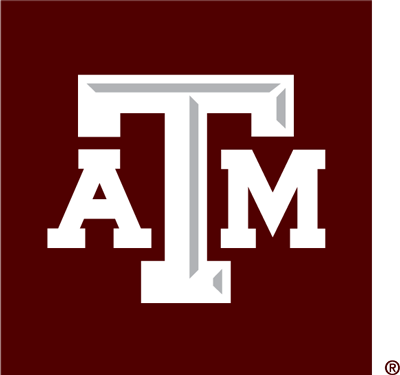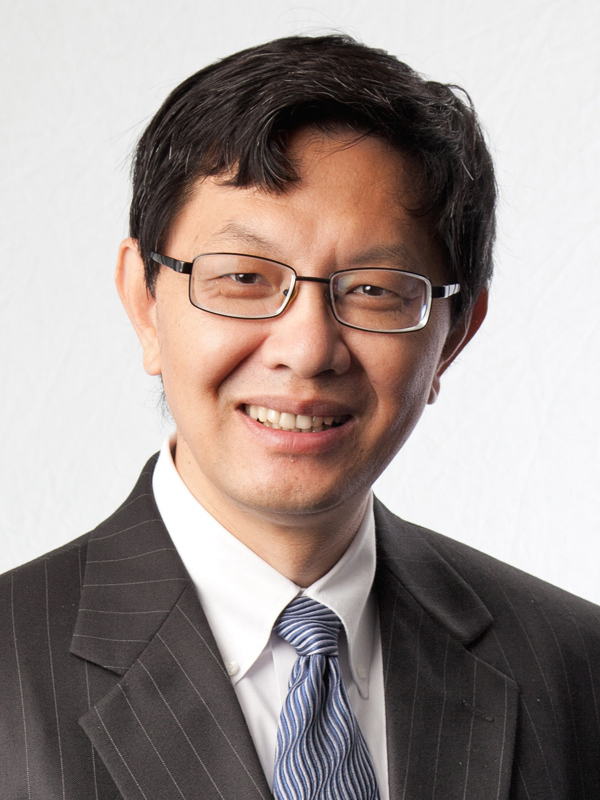Biography
Additional Information
- University Distinguished Professor (2020-present), Texas A&M University (TAMU)
- Professor, September 2008–present, Department of Atmospheric Sciences, TAMU
- David Bullock Harris Chair in Geosciences (College of Geosciences, 1/1/2010-8/31/2022; College of Arts & Sciences, 9/1/2022-present), TAMU
- Adjunct Professor (07/2021-present), Dept. of Oceanography, TAMU
- Adjunct Professor (06/2009-present), Dept. of Physics & Astronomy, TAMU
- Affiliation (2021-present) with the Institute for Quantum Science & Engineering, TAMU
- Senior Associate Dean for Research (6/1/2022-8/31/2024), College of Arts and Sciences (the college consists of 32 institutes/centers and 18 academic departments: Physics & Astronomy, Chemistry, Biology, Statistics, Mathematics, Atmospheric Sciences, Oceanography, Geology & Geophysics, Geography…History, English, Philosophy), TAMU
- Associate Dean for Research (interim appointment, 9/1/2019-2/29/2020; formal appointment, 3/1/2020-8/31/2022), College of Geosciences, TAMU
- Department Head (09/01/2012-8/31/2018), Department of Atmospheric Sciences, TAMU
- Associate Professor, September 2005–August 2008, Department of Atmospheric Sciences, TAMU
- Assistant Professor, September 2001–August 2005, Department of Atmospheric Sciences, TAMU
- Associate Research Scientist, March 2001–September 2001, Goddard Earth Sciences and Technology Center, University of Maryland, Baltimore County, Baltimore, Maryland
- Research Scientist, January 1999–February 2001, Science and System Application, Inc., Lanham, Maryland (worked on-site in code 913, NASA Goddard Space Flight Center, Greenbelt, Maryland)
- Assistant Research Scientist, December 1997–January 1999, Department of Atmospheric Sciences, University of California, Los Angeles
- Research Associate, January 1996–November 1997, Department of Meteorology/Center for Atmospheric Remote Sensing Study, University of Utah
Links
Research Interests
Prof. Yang and his group are interested in the following research areas: 1) remote sensing of cloud and aerosol radiative and microphysical properties from satellite observations; 2) radiation parameterizations of aerosol and cloud properties for radiative transfer simulations in the atmosphere, 3) assessments of cloud and aerosol radiative forcing effects based on modeling capabilities and measurements; 4) scalar and polarized modeling capabilities for radiant energy transfer in the atmosphere-land-ocean coupled system; 5) theory and numerical capabilities for computing the optical properties of nonspherical and inhomogeneous particles and relevant applications to the studies of ice clouds, dust aerosol, and oceanic particles; 6) surface snow; 7) applications of light scattering and radiative transfer capabilities to astrophysical problems such as interstellar dust; 8) application of light scattering computational capabilities to bio-optics (e.g., the optical properties of red blood cells).
Prof. Yang’s research group has been using the observations made by the Moderate Resolution Imaging Spectroradiometer (MODIS), Geostationary Operational Environmental Satellites (GOES), the Clouds and the Earth's Radiant Energy System (CERES), the Atmospheric Infrared Sounder (AIRS), the Polarization and Directionality of the Earth’s Reflectances (POLDER), and the Cloud-Aerosol Lidar and Infrared Pathfinder Satellite Observation (CALIPSO) instruments for various problems involved in atmospheric and oceanic remote sensing, particularly for the studies of ice clouds, summarized in a milestone book (Liou, K. N., and P. Yang, 2016: Light Scattering by Ice Crystals: Fundamentals and Applications, Cambridge University Press, 443 pp), and dust aerosols.
Because understanding of the radiative budget of the Earth-Atmosphere system must begin with the fundamental scattering and absorption properties of cloud and aerosol particles, the group makes significant efforts to simulate the optical properties of various nonspherical aerosol particles and ice crystals within cirrus clouds. The group has developed state-of-the-science light scattering computational capabilities summarized in an invited paper by Yang et al., 2019: On the convergence of numerical computations for both exact and approximate solutions for electromagnetic scattering by nonspherical dielectric particles, Progress In Electromagnetics Research, 164, 27-61. In addition, the group has developed databases (in particular, TAMUice2013, TAMUice2016, a tri-axial ellipsoidal mineral dust optical property database, and TAMUdust2020) of the optical properties of ice crystals and dust particles, which are extensively used by many other researchers worldwide. In particular, the MODIS, CERES, AIRS, and IIR (Imaging Infrared Radiometer) operational ice cloud retrieval products use the single-scattering properties of ice crystals developed by Prof. Yang’s group.
To implement advanced remote sensing techniques, fast radiative transfer models are often required. A substantial portion of the group's research effort is concentrated on developing fast models for the transfer of solar and infrared radiation under cloudy and aerosol-dusty conditions for passive remote sensing applications and an efficient Monte Carlo radiative transfer model for active remote sensing applications. In addition, the group has been working on vector radiative transfer to explore the application of polarization properties for atmospheric and oceanic remote sensing. Our group has developed an efficient vector radiative transfer model, referred to as TAMU-VRTM, for the atmosphere-ocean coupled system.
Recently, Prof. Yang’s group has been interested in improving broadband radiative transfer submodels involved in climate models. For example, we found that the global average longwave scattering effect of clouds is comparable to the direct radiative effect due to doubling CO2. The group has also improved the ocean surface albedo model. Furthermore, the group has been studying 3-D radiative transfer.
Educational Background
- Ph.D., University of Utah
Awards & Honors
Extramural Awards/Honors
- Fellow, the American Geophysical Union (AGU)
- Fellow, OPTICA (formerly, the Optical Society of America, OSA)
- Fellow, the American Meteorological Society (AMS)
- Fellow, the American Physical Society (APS)
- Fellow, the American Association for the Advancement of Science (AAAS)
- Fellow, The Electromagentics Academy (TEA)
- Fellow, Institute of Electrical and Electronics Engineers (IEEE)
- Humboldt Research Award (2025) by Alexander von Humboldt Foundation. According to the foundation, “The Humboldt Research Award is conferred to internationally recognised researchers in recognition of their entire academic record to date.”
- The 2024 Robert H. Goddard (RHG) – Exceptional Achievement for Science Award to the MODIS/VIIRS Cloud Products Science Team by NASA Goddard Space Flight Center (Ping Yang, as a team member, is a recipient of this award
The 2024 International Radiation Commission (IRC) Gold Medal Award. Note: the IRC is the oldest of the ten commissions of the International Association of Meteorology and Atmospheric Sciences (IAMAS), itself one of the associations of the International Union of Geodesy and Geophysics (IUGG). The IRC is also the longest-running commission under IUGG. The IRC Gold Medal Award is bestowed every four years. The previous IRC Gold Medalists include:
- 2004: Dr. Richard Goody (deceased), Professor Emeritus, Harvard University
- 2008: Dr. Graeme Stephens, NASA Jet Propulsion Laboratory (JPL)
- 2012: Dr. Kuo-Nan Liou (deceased), Distinguished Professor, University of California, Los Angeles (UCLA)
- 2016: Dr. Teruyuki Nakajima, Professor Emeritus, University of Tokyo, Japan
- 2022 (delayed due to the COVID pandemic): Dr. William L. Smith, Sr., Professor Emeritus, University of Wisconsin-Madison
Distinguished Texas Scientist (2022), Texas Academy of Science: Each year, the Board of Directors of the Texas Academy of Science honors only one researcher in Texas as the Distinguished Texas Scientist.
- Van de Hulst Light-Scattering Award (2022): This award, sponsored by Elsevier biennially, is the most prestigious in the field of electromagnetic and light scattering by particles. The award selection was determined by an international committee composed of at least 20 leading experts in the field, as stated in the call for nominations
- Award of Appreciation (2021): “In appreciation of your outstanding service as Editor of the Board of the Journal of the Atmospheric Sciences” by the American Meteorological Society
David and Lucille Atlas Remote Sensing Prize (2020) bestowed biennially by the American Meteorological Society (AMS); “For sustained, seminal contributions to developing light-scattering and radiative transfer models and datasets for remote sensing of ice clouds and dust aerosols.”
NASA Exceptional Scientific Achievement Medal (2017) (only six medals of this category were bestowed by NASA in 2017. According to NASA, this medal is “one of the Agency’s most prestigious honor awards for outstanding contributions to the Agency’s mission.”)
- Ascent Award (2013) by the American Geophysical Union (AGU) Atmospheric Sciences Section (Five awards were given in 2013. “Established in 2012, the Atmospheric Sciences Ascent Award aims to reward exceptional mid-career (academic, government, and private sector) scientists in the fields of atmospheric and climate sciences. “Mid-career” is defined here as between 8 and 20 years post-Ph. D. or the scientist’s highest degree. The only criterion for the award is that the applicant demonstrates excellence in research and leadership in his or her field.”)
- Distinguished Alumni Award (2017), Department of Atmospheric Sci., University of Utah
- NASA Group Achievement Award to ACCRI Aircraft Cloud Effects Team (8/30/2013)
- NASA Group Achievement Award to CERES Clouds Team (8/30/2013)
Certificate of Appreciation, National Institute of Standards and Technology (NIST, March 2011)
- Certificate of Appreciation, NASA (November 2010)
- National Science Foundation (NSF) CAREER Award, 2003
- NASA Group Achievement Award to CRYSTAL-FACE Science Team, 2003
- Best Paper Award, Climate and Radiation Branch, NASA Goddard Space Flight Center, 2000
TAMU Awards/Honors
- University Distinguished Professor (elected 2020), Texas A&M University. In 2020, “Seven Texas A&M University scholars have earned the university’s highest faculty honor by being named Distinguished Professors. The 2020 class of University Distinguished Professors includes faculty from the College of Agriculture and Life Sciences, the College of Engineering, the College of Geosciences, the School of Law, and the College of Science.”
- The Selfless Service Award (2018), College of Geosciences, Texas A&M University
University-level Distinguished Achievement Award in the category of Faculty Research (2017), the Association of Former Students (AFS) and Texas A&M University. (Six awards per year at TAMU. This award recognizes, encourages, and rewards individuals whose research efforts have been particularly significant and outstanding and are recognized locally, nationally, and internationally. The results of these research efforts have added substantially to the basic body of knowledge, contributed to the improvement of the quality of life, and/or encouraged additional research. The selection was made by a university-wide committee).
Holder of the David Bullock Harris Chair in Geosciences (College of Geosciences, 1/1/2010-8/31/2022; College of Arts & Sciences, 9/1/2022-present), Texas A&M University
The Association of Former Students’ (AFS) College-level Teaching Award (2008), College of Geosciences, Texas A&M University.
- Dean’s Distinguished Achievement Award for Faculty Research (2004), College of Geosciences, Texas A&M University.
Selected Publications
-
As of May 1, 2025, Prof. Ping Yang has published 383 refereed journal papers, 11 book chapters, and 4 books. Prof. Yang's publications have been cited 17,881 times (Web of Science)/27,264 (Google Scholar) with an h-index of 67 (Web of Science)/84 (Google Scholar).
-
See the list of Prof. Yang’s publications:
https://sites.google.com/a/tamu.edu/yang-publications/prof-ping-yangs-publications?authuser=0
-
Editorship
Editor-in-Chief (9/1/2020-8/20/2024) and Associate Editor (01/2007-8/31/2020): Journal of Quantitative Spectroscopy & Radiative Transfer.
Editor (1/2020-8/20/2024) and Associate Editor (1/2018-12/2019): Journal of Geophysical Research-Atmospheres.
Section Editor (3/2022-8/15/2024), Encyclopedia of Atmospheric Sciences, 3rd Edition, Elsevier.
Editor (4/2015- 12/31/2020) and Associate Editor (2004-4/2015): Journal of the Atmospheric Sciences.
Guest Editor, Special Issue “Analysis of Decadal-Scale Continuous Data Products from Weather Satellite Platforms” in Remote Sensing, 2021.
Associate Editor (2/2018-9/1/2020) and Editorial Board (5/2015-2/2018), Remote Sensing of Environment (this is one of the highest quality journals in the discipline of Remote Sensing)
Section Editorial Board (11/2017-11/2020): Remote Sensing
Editorial Board member/Editor (09/2010-2018): Theoretical and Applied Climatology
Associate Editor (01/2007-07/2012): Journal of Applied Meteorology and Climatology)

